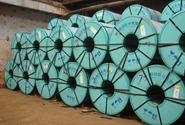Prices

August 26, 2014
July Foreign Steel Imports Reach 3.8 Million Net Tons
Written by John Packard
Falls Church, Va. August 26, 2014. Steel imports into the United States continued to grow in July, expanding by more than 6 percent from June and nearly 56 percent from a year earlier.
July imports totaled 3.8 million net tons, 221,000 net tons more than in June. Imports from South Korea and Russia showed the greatest growth, with the former expanding 27.5 percent to 584,000 net tons and the latter 135 percent to 363,000 net tons. Compared to July 2013, Korean imports were up 144 percent and Russian imports jumped 322 percent. Notwithstanding the overall increase, imports from several major U.S. trading partners were down in July: the European Union 1.3 percent to 634,000 net tons; Canada 2.6 percent to 527,000 net tons; Brazil 5.4 percent to 440,000 net tons, and Mexico 27.7 percent to 294,000 net tons.
During the first seven months of the year, imports increased 36.6 percent over the same period in 2013 to total 24.9 million net tons. Sharp increases in imports from Russia, the E.U., South Korea, and China led the year-to-date growth.
Semifinished imports increased 49 percent from June to July to 775,000 net tons and are up 62 percent to 6.3 million net tons year-to-date.
Imported steel serves a critical role in the U.S. economy, satisfying demand at lower prices than are available domestically, and promoting growth. As a result, the move toward increased imports is likely to continue, though the country-of-origin trends that we have seen in 2014 may change as a result of certain political and legal decisions.
Increases in Russian steel have accounted for almost one-third of the overall growth in imports this year. As Russia continues its involvement in the rebellion in eastern Ukraine, and the West looks for non-military ways to respond, tougher economic sanctions that could affect the steel sector are a possibility. Increases from South Korea, meanwhile, equal nearly one-sixth of this year’s total expansion in imports. The U.S. International Trade Commission on Aug. 22 voted to impose anti-dumping duties on South Korea for its sale of oil country tubular goods (OCTG) in the United States. More than half of all imports of OCTG, which are used for oil and gas exploration, come from South Korea. This ruling may cause shifts in OCTG sourcing, and it will almost certainly increase the cost of doing business for energy companies, which could, in turn, drive up energy prices for consumers. (Source: American Institute for International Steel)







